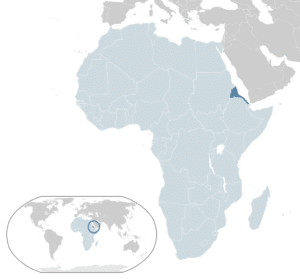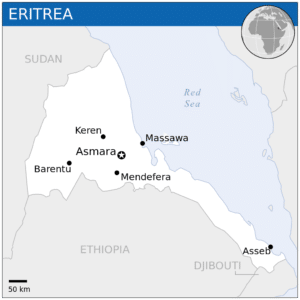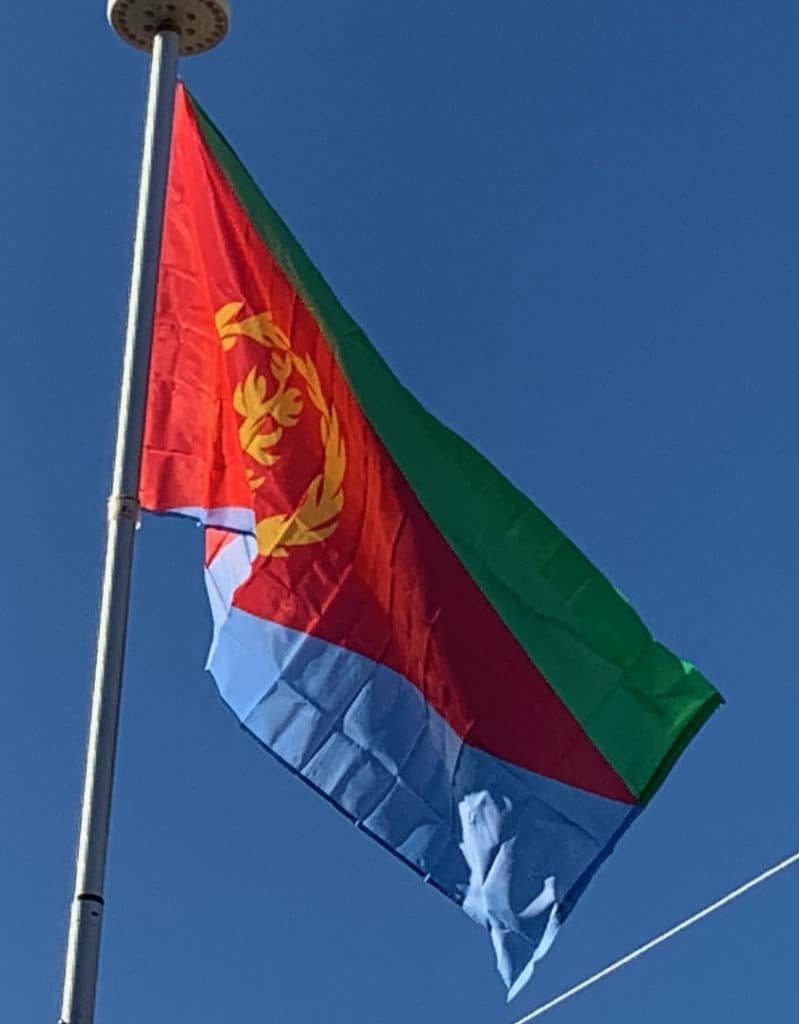Introduction:
Eritrea, officially the State of Eritrea), is a country in the Horn of Africa in East Africa, with its capital at Asmara. It is bordered by Sudan in the west, Ethiopia in the south, and Djibouti in the southeast. The northeastern and eastern parts of Eritrea have an extensive coastline along the Red Sea. The nation has a total area of approximately 117,600 km2 (45,406 sq mi), and includes the Dahlak Archipelago and several of the Hanish Islands.

Eritrea is a multi-ethnic country, with nine recognized ethnic groups in its population of around 3 million. Eritrea has nine national languages which are Tigrinya language, Tigre, Afar, Beja, Bilen, Kunama, Nara, Saho. Tigrinya, Arabic, and English serve as the three working languages. Most residents speak languages from the Afroasiatic family, either of the Ethiopian Semitic languages or Cushitic branches. Among these communities, the Tigrinyas make up about 55% of the population, with the Tigre people constituting around 30% of inhabitants. In addition, there are a number of Nilo-Saharan-speaking Nilotic ethnic minorities. Most people in the territory adhere to Islam or Christianity.
The Kingdom of Aksum, covering much of modern-day Eritrea and northern Ethiopia, was established during the first or second centuries AD. It adopted Christianity around the middle of the fourth century. In medieval times much of Eritrea fell under the Medri Bahri kingdom, with a smaller region being part of Hamasien.
The creation of modern-day Eritrea is a result of the incorporation of independent, distinct kingdoms and sultanates (for example, Medri Bahri and the Sultanate of Aussa) eventually resulting in the formation of Italian Eritrea. After the defeat of the Italian colonial army in 1942, Eritrea was administered by the British Military Administration until 1952. Following the UN General Assembly decision, in 1952, Eritrea would govern itself with a local Eritrean parliament but for foreign affairs and defense it would enter into a federal status with Ethiopia for a period of 10 years. However, in 1962 the government of Ethiopia annulled the Eritrean parliament and formally annexed Eritrea, but the Eritreans who had argued for complete Eritrean independence since the ouster of the Italians in 1941 anticipated what was coming and, in 1961, organized the Eritrean Liberation Front in opposition. In 1991, after 30 years of continuous armed struggle for independence, the Eritrean liberation fighters entered the capital city, Asmara, in victory.

The sovereign state is a totalitarian one-party dictatorship in which national legislative and presidential elections have never been held since independence. According to Human Rights Watch, the Eritrean government’s human rights record is among the worst in the world. The Eritrean government has dismissed these allegations as politically motivated. The compulsory military service requires long, indefinite conscription periods (6.5 years on average), which some Eritreans leave the country to avoid. Because all local media is state-owned, Eritrea was also ranked as having the third-least press freedom in the global Press Freedom Index, behind North Korea and Turkmenistan.
